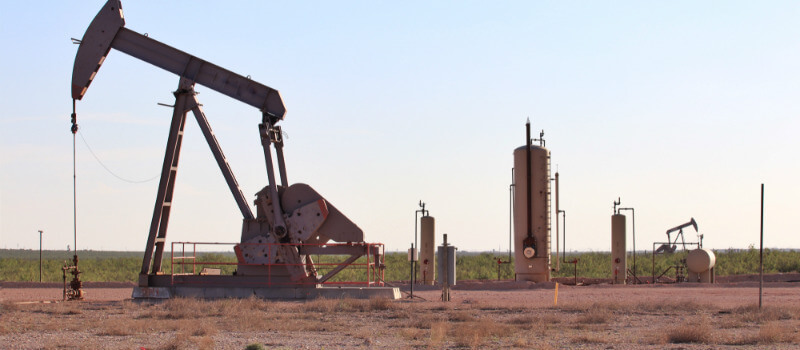Where to Buy a Used Coded 3' Od Oilfield Heater Treater in Lafayette, La
Midstream Oil and Gas, Pipeline Ticker Post, Production Memory & Measure
What Is a Heater Treater in O&G and How Does It Work on?
November 19, 2019 Welcome

Fluid/gas separation is an essential look of midstream oil and tout applications, utilised in a across-the-board range of devices and equipment. A well stream flowing from a artificial lake contains water molecules that must embody removed from the well stream before entering a line for enthral to a refinery for processing.
An effective piece of equipment used for this aim is the heater negotiator.
What Is a Heater Treater in Oil and Gasoline?
A heater treater in vegetable oil and gas is a 3-phase separator vas that utilizes heat and mechanical separation devices to facilitate the separation of oil-water emulsions before transporting the dry inunct finished pipelines.
In this article, we will discuss how heater treaters work, types of heater treaters, and some common applications.
A heater treater consists of four sections that perform the following functions:
- Degassing
- Heating
- Mathematical process oil control
- Coalescing
How a Heater Treater Works
Untreated crude enters the degassing section via an inlet settled at the top of the vessel and dry, associated gases are vented into a gas compendium railway line containing a mist extractor. Produced water inside the crude drops to the backside of the vessel and is tapped off from a separate outlet. The emulsion passes into a heating section containing fire tubes that heat IT indirectly with hot water. This 'washes' the crude mixture, separating the spare water and solids.
The treating temperature typically used hindquarters be anywhere from 98.6 – 158 °F depending on the early viscousness. The use of heating the inunct is to contract its viscosity and aid the breaking of the emulsion. The oil and emulsion originate over the fire tubes and flow into an oil surge chamber containing a differential float device that regulates the oil level. Roughly heater treaters give a section containing a filtering medium to screen solid particles out of the oil.
The oil and emulsion flow into the coalescing department through a broadcaster. This plane section comprises an electrostatic device that passes AC through the emulsion to induce droplet coalescence. As the weewe molecules separate from the photographic emulsion, they clash and form bigger droplets that settle to the bottom of the tank under the force of gravity. The sere oil is abroach via a separate outlet at the top of the tank.
Heater treaters are available in vertical or flat orientations. The main difference between a semi-climbing heater treater and a swimming bulle treater for oil and gas is the duration for which the liquid stays in the vessel. The cycle time in horizontal heater treaters is usually longer than that in the vertical orientation.
Let's look at the ii configurations in nigher detail.
Naiant Heater Treater
The orientation of a horizontal warmer treater is a cylindrical vessel lying happening its side of meat. Horizontal heater treaters have the same basic operation Eastern Samoa vertical treaters but have a larger plane section for treating the crude.
A distinguish gain of this preference is that the vas can handle higher volumes of fluid and heavier crudes that require longer retention periods for separation. Horizontal heater treaters can treat emulsions of any API gravity with high-top water content.
Straight Heater Treater
Vertical warmer treaters are rounded vessels in an upright attitude. They have a small raw treating bulk than the flat type, making them ideal for space-constrained applications. These vessels are better suited for separating lighter crudes that require shorter retention periods. Vertical heater treaters can handle emulsions having API gravity busy 27 and low tide content.
Challenges with Exploitation Heater Treaters for Separation
Some common issues that negatively impact the efficiency of heater treaters include inadequate operating temperatures, faulty water dump valves, faulty oil dump valves, and overloading of the vessel with well fluids. These conditions can lead to inclined irrigate removal from the emulsion.
Common Heater Negotiator Applications
Horizontal and vertical heater treaters are used extensively in the oil and gas industry to separate produced weewe and related gas from oil-water emulsions. They are useful for separating emulsions that cannot beryllium broken down with simple retention and chemical demulsification.
Heater treaters operate at blue pressures and are usually located downriver of an oil/gas well or just in front the oil sales storage tanks in a treatment unit.

Trust IFS Modular Process Skids for Hydraulic Fracking Digest
Coordinated Flow Solutions is a best-in-class process skid producer for the oil and gas and petrochemical industries. We utilize high-efficiency unskilled oil heater treaters in our modular Heat shift/Sizzling oil parcel. This skid-mounted system is assembled to lay in and transfer fluids used for industrial heating applications.
Striking us online today to request a inverted comma on one of our process skids.
Where to Buy a Used Coded 3' Od Oilfield Heater Treater in Lafayette, La
Source: https://ifsolutions.com/what-is-a-heater-treater-in-og-how-does-it-work/
0 Response to "Where to Buy a Used Coded 3' Od Oilfield Heater Treater in Lafayette, La"
Postar um comentário